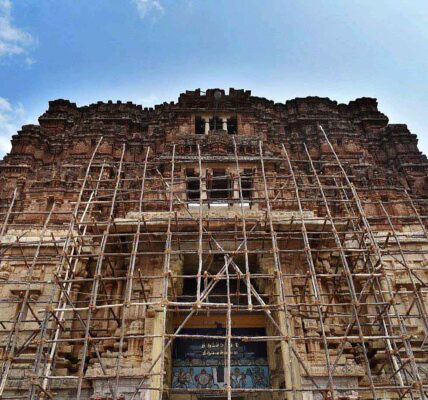The Ties
that Bind
Renuka Sawhney

Consequently, these borders, alliances and exchanges form
a shifting and complicated picture. As artist Naeem Mohaiemen
writes, ‘In 1971, Kolkata’s deep empathy for millions of Bengali
war refugees streaming across the border from East Pakistan
pressured the Indira Gandhi government to intervene in the
war. But in 2011, when the body of a refugee girl, Felani, hangs
on a border fence after being shot by Indian border security, the
figure of the “illegal Bangladeshi migrant” is too dehumanized
for West Bengal to pay attention. As West Bengal’s attitudes
toward Bangladesh shifts from nostalgia to suspicion, so too
does that of India.7’ While on the cultural front, exchanges are
also a function of political constraints. Mohaiemen continues,
‘Popular Bangladeshi box office hits like “Beder Meye Josna”
have to be reshot for the Indian market, to bypass unofficial
restrictions on cultural exchanges. The director Mrinal Sen,
another West Bengali originally from East Bengal, was asked
why he had never shot a film in Bangladesh. He replied that
the governments on both sides of the border always make it
impossible.’8 
A border issue currently pending resolution concerns
the enclaves that exist on the northern border of Bangladesh
and India (there are 111 Indian enclaves in Bangladesh and
51 Bangladeshi enclaves in India9), formalized in 1711 and
1713. Over the ensuing years they have become neglected
areas where inhabitants have no access to public services from
either country. In August of 2013, the Indian parliament is set
to amend the India – Bangladesh Land Boundary Agreement
(1974), however the Indian government faces opposition from
regional parties. According to a recent article by the Economist,
‘…international intriguing tends to ignore the people who
actually live in the enclaves—150,000 by some estimates—
who are left waiting. Their chief grievance is a complete lack
of public services: with no education, infrastructure for water,
electricity etc, they may as well not be citizens of any country.
The people who actually live in enclaves (and counter-enclaves)
in a certain sense “don’t see” the borders. They speak the same
language; eat the same food and live life without regard to
the politicians in Dhaka, Kolkata and Delhi. Many of them
cross the border regularly (the bribe is US$6 a trip from the
Bangladeshi side)’.
In Dhaka the upcoming
2nd edition of the Dhaka Art Summit (DAS), a non-profit
initiative, founded by collectors Nadia and Rajeeb Samdani is
a significant example of South Asian cultural exchange. Nadia
Samdani, the Director of the DAS suggests that confidence is
closely tied to the last economic boom, which has generated
interest in South Asian art. Pointing to the fact that major
museums have formed South Asian acquisition departments
and committees (Tayeba Begum Lipi is now in the Guggenheim
Museum), Nadia believes that Bangladesh has the potential
Anisuzzaman Sohel, Leap across time-1, pen, acrylic and graffiti on paper,
to form a hub for the arts in South Asia as well as South East Asia. She
says, ‘…for South Asia to make the best of this opportunity there should
be an alliance and exchange among countries and keeping that in mind,
the 2nd edition of Dhaka Art Summit is being organized with a focus
on pure South Asian art only. Not only will this be a common platform
for countries to exhibit their art, but also to start a dialogue among the
countries.’ She cites recent cross border exchanges as precursors to future
alliances and collaborations, ‘The exhibition being held in The Guild
gallery in Mumbai is be a prime example of Bangladeshi artists being
exhibited at an Indian gallery and we hope to see it go the other way
round soon. Other than the Guild exhibition, Latitude 28 (In Delhi) and
Palette gallery (Delhi) have recently shown works by Bangladeshi artists.
Experimenter and Ganges gallery from Kolkata represent Bangladeshi
artists, Samdani Art Foundation had participated in the India Art Fair last
year, and among the 15 international galleries participating in the Dhaka
Art Summit, eight are from India.’
In addition to the galleries exhibiting at the Dhaka Art Summit, Diana
Campbell Betancourt, director and chief curator of the Creative India
Foundation will curate solo projects and public art projects including the
works of South Asian artists, Jitish Kallat, Shilpa Gupta, Mithu Sen, Shazia
Sikander, Rashid Rana, Tayeba Begum Lipi, Mahbubur Rahman, Asim
Waqif, and Rathin Barman with a city wide site specific installation by Raqs
Media Collective, while Mahbubur Rahman will curate performance and
experimental film. For both curators the selection of works is not dictated
by country of residence (they’re working with artists from Myanmar,
Afghanistan and Sri Lanka), but by highlighting interesting practices of
artists from all around the world with South Asian ties. This is an inclusive
way to represent South Asia while acknowledging
borders, differences and commonalities.

